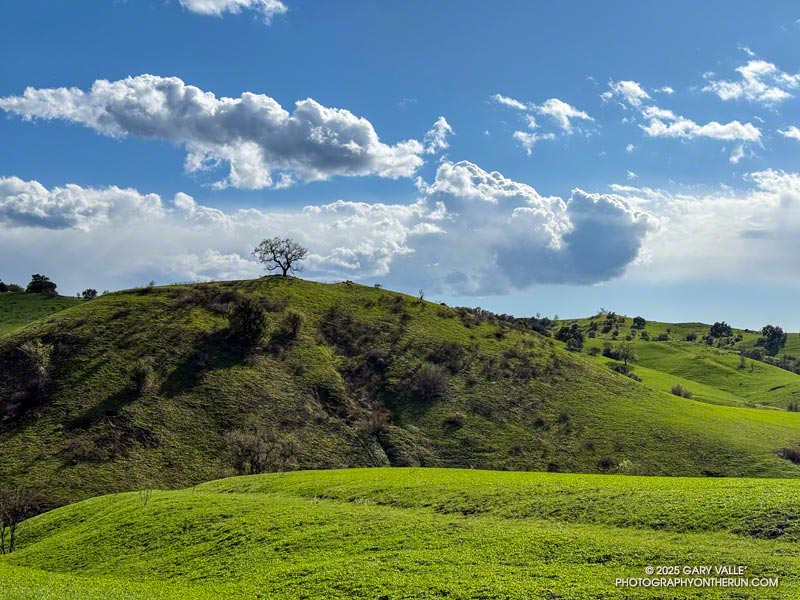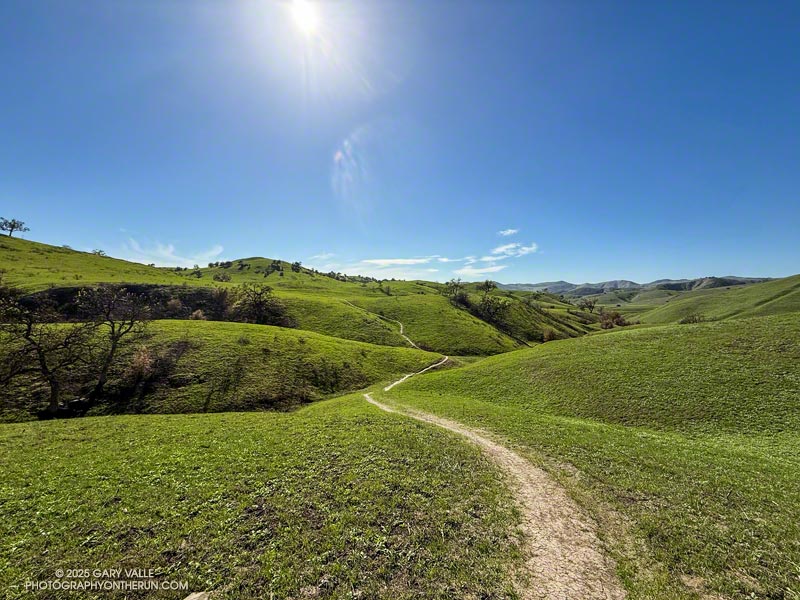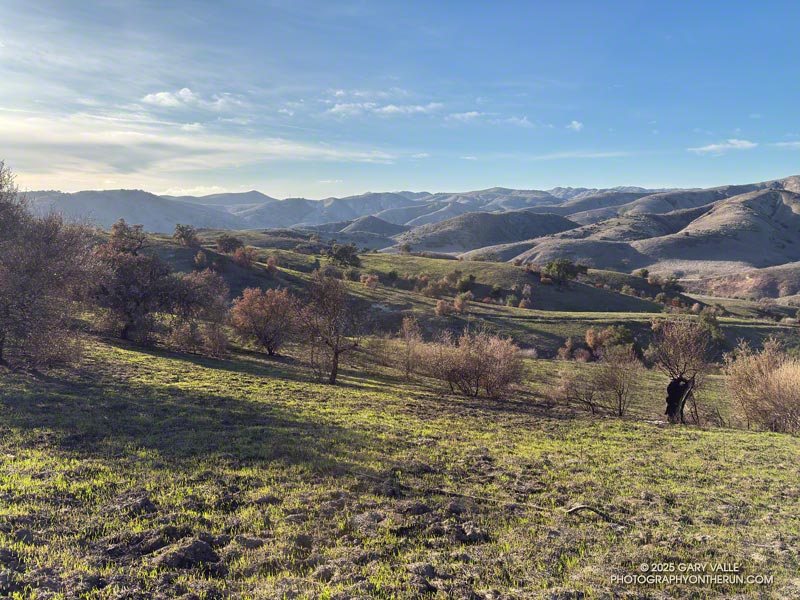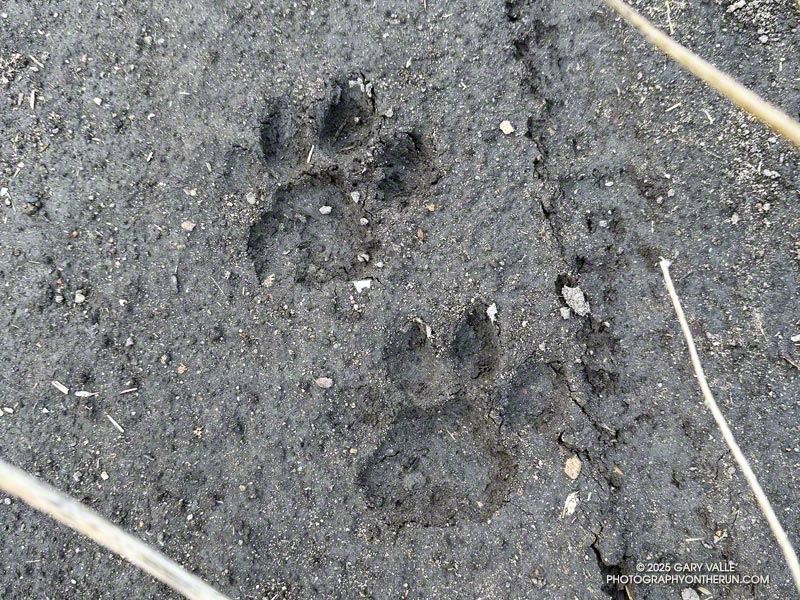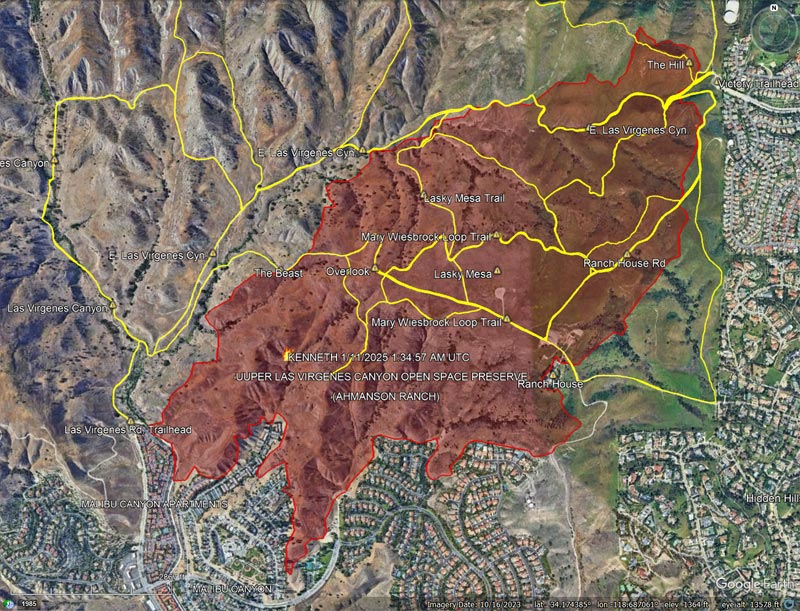
At first glance you might think there aren’t any wildflowers at Upper Las Virgenes Canyon Open Space Preserve (Ahmanson Ranch). The grasses, mallow, mustard and other invasives tend to crowd them out, but the wildflowers are there.
As seen in the title photo, there are a few nice patches of California poppies. Unless you have a sharp eye, you probably won’t see them from the parking lot. They like warm, west-facing slopes. If it’s early morning or chilly, their blossoms will be tightly furled to protect against the cold.
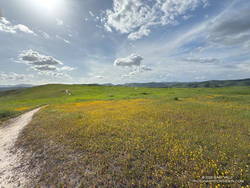
Individual goldfields (Lasthenia gracilis) may go unnoticed, but it’s hard to miss the bright yellow patches of goldfields scattered around Laksy Mesa.
Red maids is another vibrantly-colored wildflower. Its rose-lavender blossoms stand out from the green of the grasses. Small patches of the flowers can be seen just about anywhere at Ahmanson in late Winter and early Spring.
Also grabbing my attention during a recent run was a small rattlesnake on the fire road in East Las Virgenes Canyon. It may be young and small, but it’s just as venomous as an adult snake. With warming temps, more encounters with snakes are likely.
Some related posts:
– If Running at Ahmanson Could Always Be Like This…
– After the Kenneth Fire: The Theme is Green
– Weekday Wildflowers
– Big Southern Pacific Rattlesnake at Ahmanson Ranch

